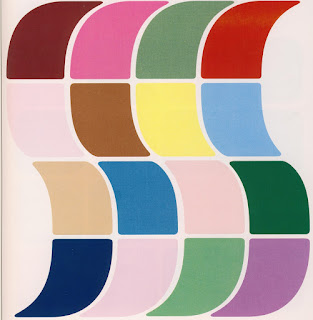But the thick lines were very heavy and too
dominant. Also need refinement and better
use when combined with the tree and animal shapes. I liked the tracks with the strong tractor tracks and lighter footprints, they were more adaptable. On the third scarf ie the one to the left, I tried masking the images so that I could use them in bands with the track marks, this related more with the tribal work I had seen at the British Museum and more successful I think!
 |
The paste was used by boiling 10 gm oak chips in 1/2 litre of water too extract the dye then sprinkling Indalca on top and stirring vigorously to thicken. This sometimes needs to be whisked and sieved. I also used 20gm walnut husks to make the brown dye paste.
I decided to darken the oak paste by adding a little indigo and this resulted in a black print.
I used the scarves from the previous unit which had been dyed with red onion and walnut. I also had one scarf with a yellow from the leaves of the Tree of Heaven in my garden. This scarf shows how important size and planning is - the images overlap awkwardly, they don't fit the space and you can also see the difference when I added indigo to the oak paste. It will be interesting to see if steaming affects colour density.











